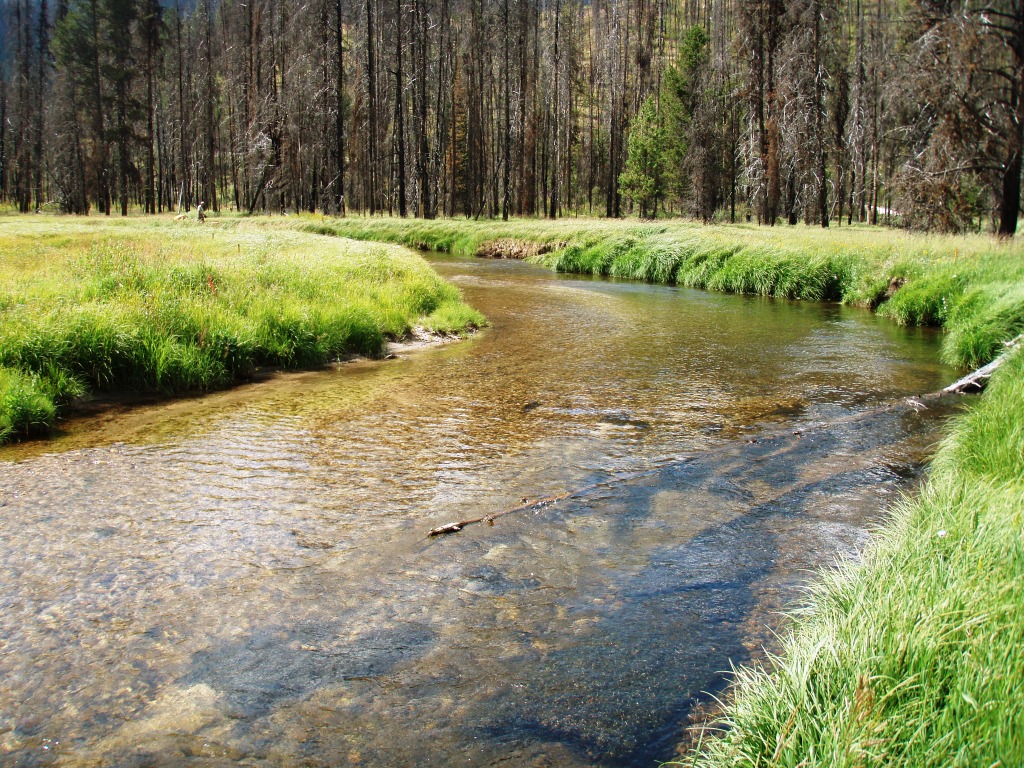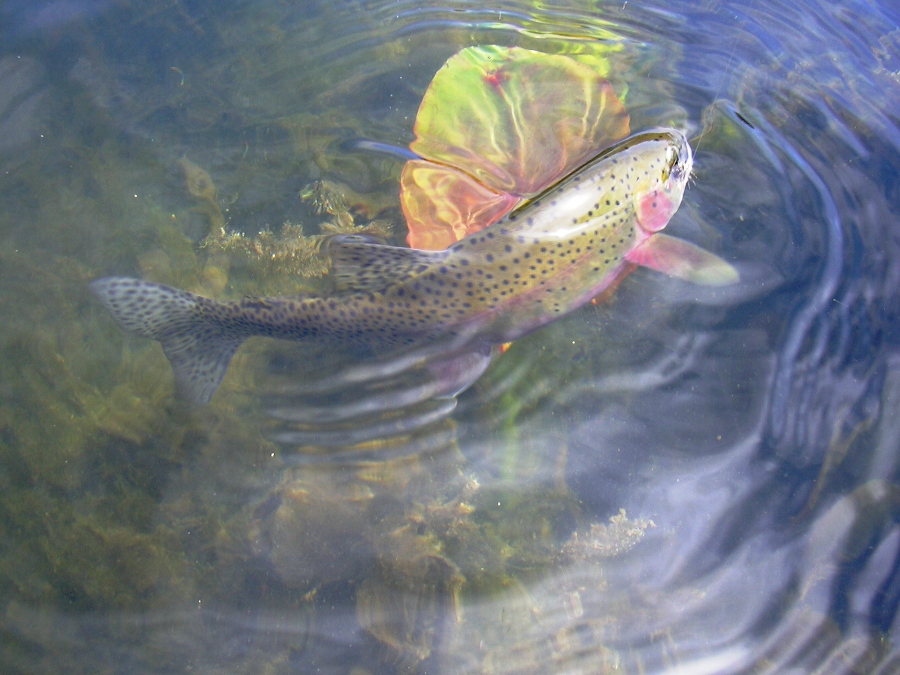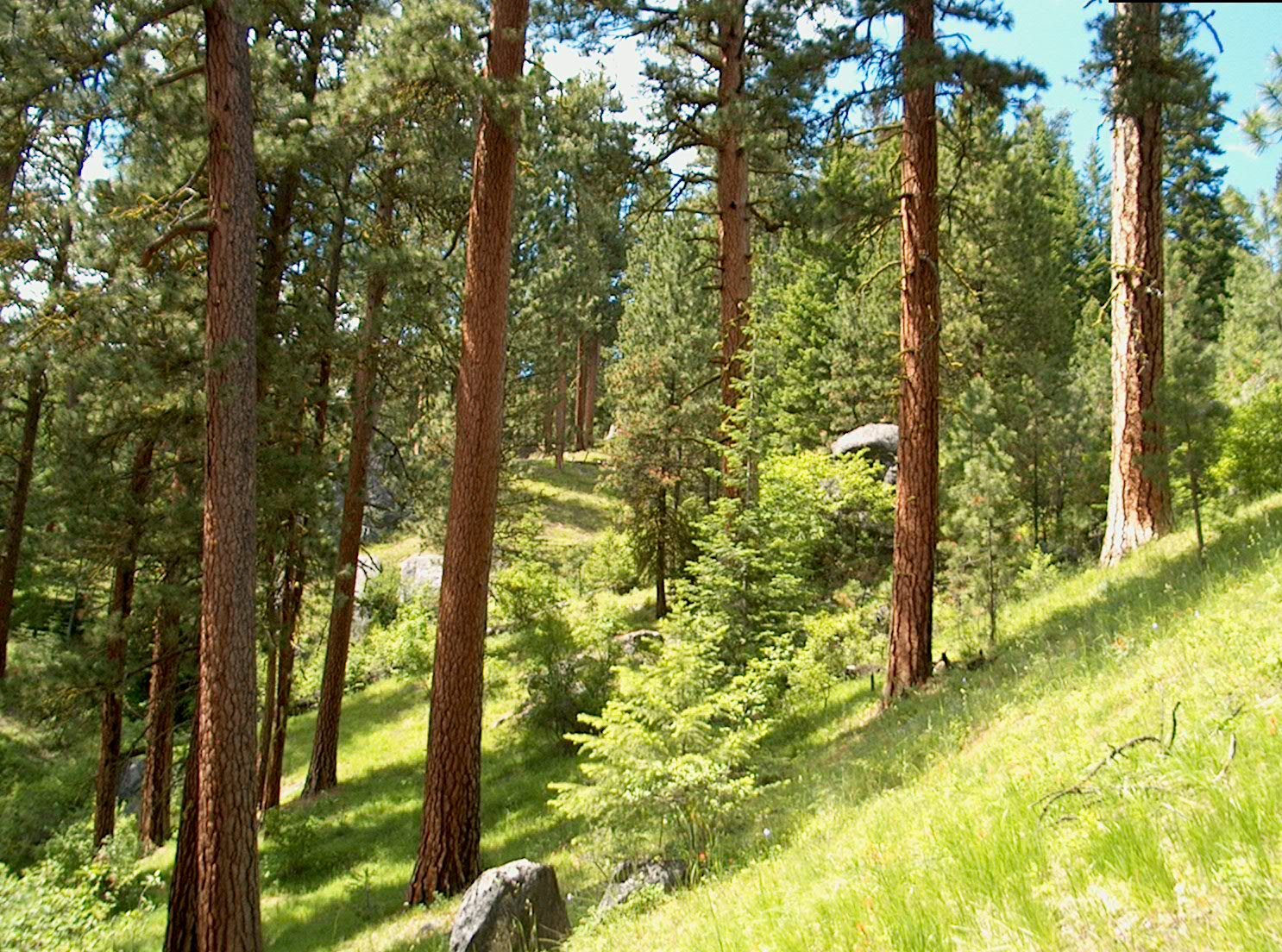About the Forest
A Quick Overview

The Boise National Forest is approximately 2,612,000 acres. Elevations vary greatly, from 2,800 feet in the North Fork Payette River Canyon to nearly 10,000 feet atop Steel Mountain. This wide range of elevations across 2 million acres encompasses a great diversity of geologic features. Geologically the Forest is dominated by granitic rock, with inclusions of basalts to the west, and volcanic rock to the south.
Major mountain ranges include the Boise, Salmon River and West Mountain ranges featuring steep slopes of coarse-textured soils that readily take in and transmit water. Unless these soils are disturbed, surface run-off is rare except during high intensity storms or rain-on-snow events.

The Forest has an estimated 9,600 miles of perennial and intermittent streams, and 15,400 acres of lakes and reservoirs. Major river systems on the Forest are the Salmon, Payette and Boise. There are an estimated 28 species of fish found on the Forest; this includes 11 species that are not native or are introduced into areas they historically did not occur.

Federally Listed species on the Forest include Chinook salmon, steelhead trout, and bull trout. There is designated critical habitat on the Forest for these species. Other native species of concern include redband trout and westslope cutthroat trout.

Most of the land supports an evergreen forest that includes pure or mixed stands of ponderosa pine, grand fir, Douglas fir, Engelmann spruce, lodgepole pine and subalpine fir.

The Forest contains large numbers of big game species, such as mule deer and Rocky Mountain elk. The average annual precipitation ranges from 15 inches at lower elevations to 70 inches at higher elevations.
Approximately 76 percent of the Forest’s lands are considered forested and about 23 percent are considered non-forested or dominated by grass, forb, shrub, or brush species. Much of the non-forested habitat is found at lower elevations or on the more southern latitudes, southern aspects.

Habitat restoration, both aquatic and terrestrial is an emphasis of our 2010 Forest Plan, influencing the development and implementation of many projects. Recreation, grazing, mining and a diversity of special uses occur on the Forest.
LOCATION AND COMMUNITY INFORMATION
The Boise National Forest is located in west central Idaho, north and east of the capitol city of Boise. The Supervisor’s Office is located in Boise. The Forest is comprised of five ranger districts – Mountain Home, Idaho City, Cascade, Lowman and Emmett—with district offices located in each of those towns. The Forest is within the Intermountain Region (Region 4) of the Forest Service, U.S. Department of Agriculture.

Conifer forest covers most of the Boise National Forest. Tree species include ponderosa pine, Douglas-fir, Engelmann spruce, lodgepole pine, grand fir, subalpine fir, western larch and whitebark pine. Shrubs and grasses grow in the non-forested areas.

Wildflowers splash color in both forests and shrub-land.
|
ORGANIZATIONAL OVERVIEW The Boise National Forest has 6 offices: the Forest Supervisor's Office in Boise, and ranger district offices in Mountain Home, Idaho City, Cascade, Lowman and Emmett, Idaho. Additionally, there are guard stations located in Garden Valley and High Valley. |
HISTORY The Boise National Forest was created in 1908 from portions of the Payette National and Sawtooth Forest Reserves. Emil Grandjean was the first Forest Supervisor. |

